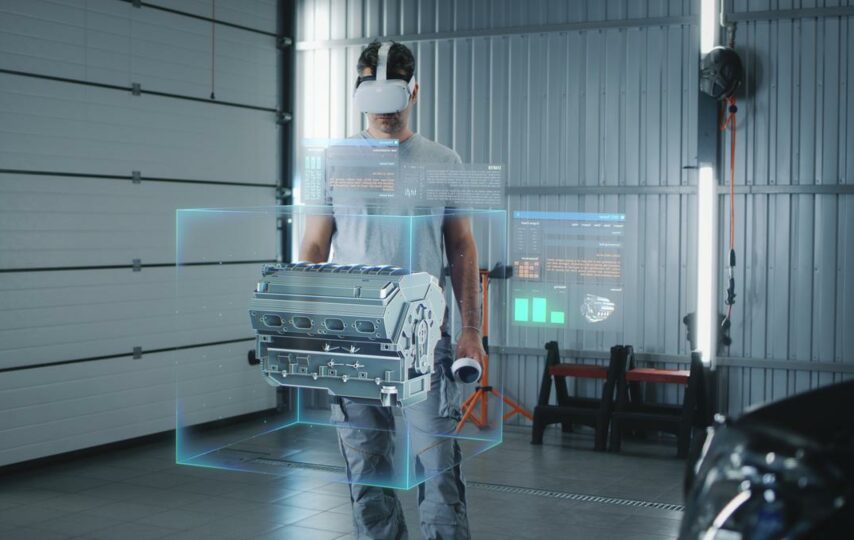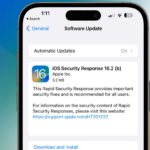AR/VR testing for wearable devices is meant to validate the full-stack reliability, compatibility, security, functionality, and all other aspects. The major factor being tested with this approach is immersiveness, which adds life to wearable gadgets with AR/VR functionalities.
The goal of using these technologies in wearable device testing is to prevent even the smallest of bugs from hampering the user experience. For instance, AR/VR technology embedded in wearable devices might cause motion sickness, eye strain, or headaches, which are some areas that QA analysts should consider testing. And that’s possible with real-world testing methodologies.
So, let’s dive deeper into using AR/VR in wearable device testing and find out how it helps streamline the overall process.
Challenges in Wearable Device Testing
The rise of wearable devices is humongous, but it has also brought some unique challenges for QA engineers. As it is still a very new space, the companies are still experimenting with ways to create new wearable applications to provide better experiences to the end-users. So, to help you get an idea of the complexities associated with wearable device testing, here are some of the challenges that it invokes:
1. Adaptability of Wearable Devices to Newer Gadgets
The QA testers are now instructed to be aware of all the new user case scenarios while testing the wearable devices. It is because consumers have a tendency to use their gadgets uniquely with respect to various smartphones. Therefore, when testing wearable devices, the QA engineers must pay attention to how the particular gadget would communicate with other smart devices that the consumers use.
2. Need for Managing the Smallest Screens
The wearable gadgets often have a very small screen, a maximum of up to 2-inch displays. Therefore, the developers are currently worrying about what they can fit in that small screen size without hampering the user’s expectations or experience. Keeping that in mind, the QA testers will also have to run their analysis in a way such that the small-screen applications or features shouldn’t affect the accessibility of users.
3. Multiple Operating Systems
Just like smartphones, wearable devices also have their own operating systems. There are multiple players in the wearable device OS market, such as Google, Samsung, and Apple, with Wear OS, Tizen, and WatchOS. So, testing the wearables for compatibility with one or multiple OS is a challenge that the technological solutions are helping with.
Introduction to AR/VR in Wearable Device Testing
As of today, AR and VR technology is transforming the wearable market. Immersive training, physical training, rehabilitation, healthcare imaging, and others are some ways in which AR/VR technology has been integrated into wearable devices.
So, as a lot of industries are relying on AR/VR embedded wearables, it is of utmost importance for the QA engineers to run tests in that specific direction. With the right kind of development and testing approach, it can be ensured that the wearable devices and their functions don’t cause discomfort to the users and provide them with an enhanced experience.
The steps followed with respect to implementing AR/VR in wearable device testing include the following:
- Understanding the Requirements
The first step towards implementing AR/VR in wearable device testing is to understand the requirements of the clients. The QA engineers should be aware of the purpose and goal behind introducing a new wearable with AR and VR technology. A storyboard will then be created for extracting the use cases, which will help the QA professionals to understand the user engagement scenarios.
- Test Initialization
The tests will then be executed to analyze various conditions under which the wearable device might have to perform. During the tests, the wearables will be checked for compatibility, performance, functionality, security, immersiveness, and other such factors. The real-time testing environment will be used for conducting the tests.
- Determine the Scope of Testing
The wearable device and its features will be monitored in real-time to check if the 2D or 3D objects are getting registered within the wearable application. Thus, it is the major scope of testing when AR/VR is involved. Furthermore, the professionals will check if the AR or VR model is redirecting to any of the specific data.
- Working in Collaboration with the Developers
The QA team should work in collaboration with the developers to fix the identified bugs at the earliest and get the wearable device ready in no time. At times, the QA engineers might need the help of developers to understand any new software or technology used in wearable devices.
Advancements in Wearable Device Testing with AR/VR
AR/VR in wearable device testing is a new-age approach to derive its enhanced functionalities. But what advancements have made AR/VR preferable for testing dedicated wearable devices? Well, here are some of them for you to count on:
1. Virtual Prototyping
The QA engineers can use the AR/VR concept to create virtual prototypes of specific wearable devices. Thus, these virtual devices can then be tested or explored for all stages. A virtual environment will be created to test the immersiveness of the wearable device. Thus, any design flaw will be easily identified, and improvements can be suggested. All of it can be done before the physical product can be built.
2. Testing the Human and Computer Interaction
As wearable devices are strongly reliable on the interactions between technology and humans, using AR/VR in testing will help evaluate the Human and Computer Interaction (HCI) rate through virtual simulations. Such tests will help the QA experts derive information on the device’s usability, comfort, accuracy of the information, and overall response duration.
These are the two recent advancements made to the use of AR/VR in wearable device testing. Apart from that, performance, user experience, biometric analysis, accessibility, and other such factors are staple approaches with the use of AR/VR for the tests.
Applications of AR/VR Test
AR/VR technology can be used through wearable devices such as smart lenses, AR glasses, VR headsets, and others. Both AR and VR technologies are used for applications across multiple industries, which include:
1. Entertainment
The entertainment sector uses AR/VR technology in its devices to provide people with augmented concerts, interactive advertisements, AR movies, and real-time information updates from sporting arenas. There are dedicated wearables that can make it possible for consumers to experience these entertainment areas. Therefore, running the AR/VR tests is of utmost importance for entertainment applications.
2. Gaming
AR and VR have introduced a revolution in the gaming sector, which was once impossible to be implemented. The 3D effects in gaming have proven to be a next-level experience for the users, which benefits the industry. AR/VR adds a captive experience and real-time interaction to the games, making them more engaging and realistic for gamers. Therefore, running the AR/VR test on the gaming wearables is a much-demanded application of this approach.
3. Healthcare
AR/VR is helping the healthcare sector boom with the facilitation of virtual medical learning. Moreover, it is also supporting the facilities to provide virtual training to the employees for added skill development. Body mapping, augmented surgery, and practical operation training simulations are all dependent on AR/VR technology. Therefore, the healthcare-specific wearables are meant to undergo the technology-specific test.
4. Military
AR/VR wearables in the military sector are used with military training simulation software to develop impactful strategies to prepare for tactical missions. Not just that, but these technological advancements are also helping military personnel with flight or vehicle simulations. Therefore, military-based AR/VR wearable devices need thorough testing as there can’t be any scope of technical errors in them. So, it is one of the most crucial applications of AR/VR testing for wearable devices.
5. Education
AR/VR devices or applications have improved the learning efficiency of students with respect to memorization, engagement, motivation, attention span, and comprehension. With this, the students are getting a very interactive learning experience. Thus, it gives rise to another common AR/VR test application.
Limitations of AR/VR in Wearable Device Testing
Even though there are impeccable benefits to the use of AR/VR in wearable device testing, there are still some form of limitations that the companies are yet to overcome. So, some of the limitations of using this testing approach include:
1. Increased Adoption Cost
When implementing the wearable app testing service, the initial cost can be very high. It might be difficult for small companies to get their wearable devices tested with AR/VR approaches, which might surpass their budget.
2. Restricted Hardware Accessibility
The modernization of the hardware embedded in the AR/VR wearable devices can affect the feasibility of testing. If you are operating your AR/VR tests on outdated devices, it might be difficult to obtain accurate tracking data, which might affect the overall test output.
3. Complex Learning Curve
The QA engineers must be very proficient with AR/VR technologies, which demands additional training sessions. Thus, the learning curve is a bit complex for implementing the AR/VR tests for wearable devices.
Conclusion:
So, these are things that explain to you the importance of AR/VR testing for wearable devices. It might seem like a complex approach, but it is very efficient when it is about giving astounding experience to the end-users. The demand for AR/VR wearables is increasing across multiple industries. Therefore, companies need to scale their testing proficiency as well. So, this article is what explains the role of AR/VR in wearable device testing.







